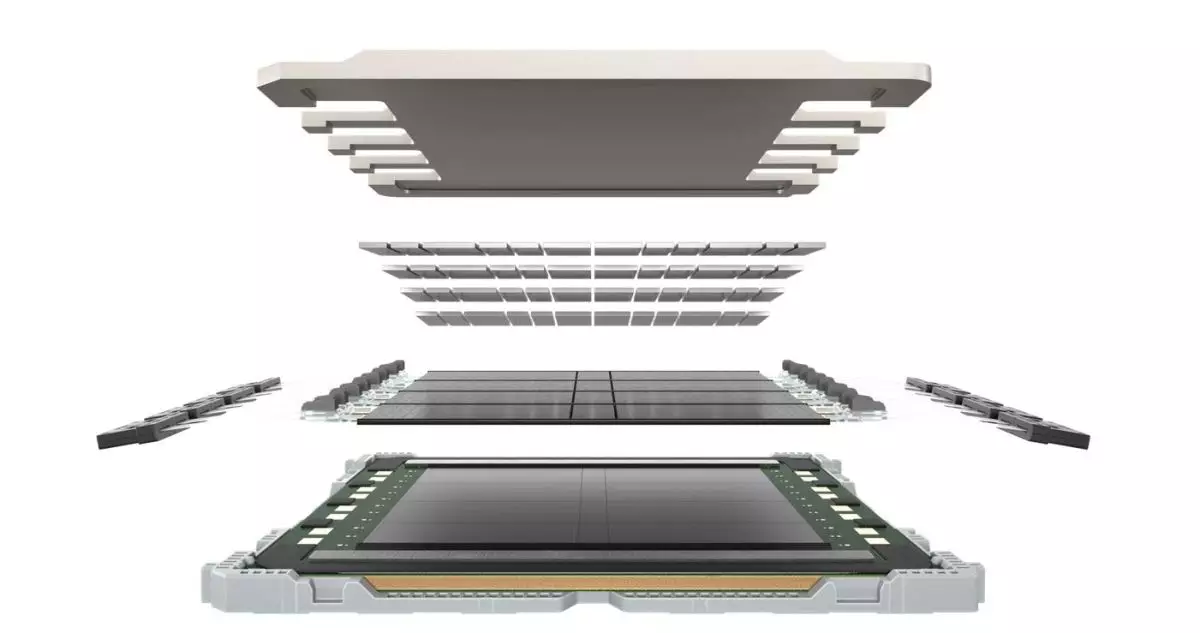As the demand for artificial intelligence (AI) accelerates, so too does the necessity for greater computational power in data centers. A significant player in this evolving landscape is Lightmatter, a startup focusing on photonic computing. Recently, Lightmatter secured $400 million in funding to advance their innovative optical interconnect technology, which promises to eliminate major bottlenecks in current data center operations. This breakthrough could revolutionize not only how AI models are trained but also how data centers are constructed and utilized in the modern world.
The rise of AI has dramatically increased the computational demands placed on data centers. Traditional approaches often involve stacking numerous Graphics Processing Units (GPUs) to meet growing workloads. However, the efficiency of these systems hinges not solely on the power of individual GPUs, but significantly on the interconnects that facilitate data transfer between them. Existing interconnect technologies frequently fall short, leading to substantial idle times as GPUs wait for data. This issue is exacerbated in larger clusters, where the need to switch between electrical and optical connections introduces latency and increases power consumption.
Nick Harris, CEO of Lightmatter, has acknowledged these limitations, articulating that the conventional infrastructure—reliant on widely used products from companies like Cisco—struggles to keep pace with the requirements of modern hyperscale computing. Current solutions, such as NVIDIA’s NVLink, provide impressive throughput figures, but these capabilities are hampered by interoperability drawbacks once data is moved outside of simple racks.
Lightmatter aims to tackle this fundamental challenge through the use of photonic chips that leverage light for data transmission, dramatically increasing speed while minimizing latency. Their current photonic interconnect technology can support an astounding 30 terabits of throughput, with projections indicating upcoming capabilities exceeding 100 terabits. This would allow for an extraordinary synthesis of performance, potentially enabling up to 1,024 GPUs to operate in synchrony within tailored racks, which fundamentally changes the dynamics of networked computing.
Moreover, the implementation of multiple fiber channels, which can carry vast amounts of data simultaneously via different wavelengths, showcases Lightmatter’s innovative approach to data transfer. This method circumvents the inefficiencies associated with traditional electrical interconnects, providing both speed and energy efficiency—two critical parameters for modern data centers facing enormous energy consumption challenges.
The startup operates in a burgeoning market, enticed by hyperscalers such as Amazon and Microsoft, who constantly seek to enhance their computing capabilities. The ongoing appetite for advanced interconnect solutions makes Lightmatter’s tech particularly compelling. Similar to semiconductor giants like TSMC, Lightmatter positions itself as a foundational enabling technology, focusing on empowering other companies rather than competing directly. This collaboration-centric approach is likely to foster an ecosystem where collective capabilities can flourish, driving advancements across the board.
Despite the great potentials, the company must negotiate the balance of leveraging partnerships without compromising its unique technology. Harris’s prudence in this area reflects the complex dynamics of the tech industry, especially as firms strive to maintain competitive edges while leveraging shared innovations.
Looking beyond interconnect technology, Lightmatter is investing in research and development for new chip substrates that promise to revolutionize networking even further. Harris has alluded to a future where power efficiency per chip becomes a defining competitive edge, predicting that wafer-scale chips will become essential to continued performance improvement. This insight underlines the company’s commitment to being at the forefront of technological evolution, poised to respond not only to current market demands but also to anticipate future trends.
As the race toward advanced computing accelerates, Lightmatter’s ambitions represent not just the promise of superior interconnect technology, but a wider paradigm shift in how data centers can function. Their recent funding round, now valuing the company at approximately $4.4 billion, is a testament to this vision and the urgency of action within the tech landscape.
Lightmatter stands at a pivotal juncture within the photonic computing domain, marrying high-performance computation with innovative optical technology. As the need for robust, efficient data processing escalates alongside AI’s growth, Lightmatter’s advancements may well define the next era of data center capabilities. Businesses watching this space should stay tuned to how these developments unfold, as they could reshape our expectations of computing power and efficiency in the years to come.

